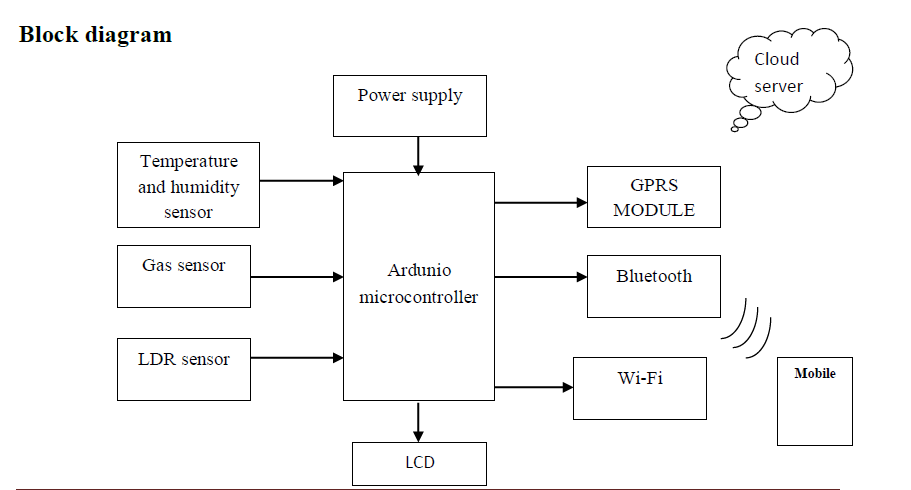Analysis Of Three Iot-based Wireless Sensors For Environmental Monitoring
Also Available Domains IOT|WSN|Embedded applications
Abstract
The recent changes in climate have increased the importance of environmental monitoring, making it a topical and highly active research area. This ?eld is based on remote sensing and wireless sensor networks for gathering data about the environment. Recent advancements, such as the vision of the Internet of Things (IoT), the cloud computing model, provide support for the transmission and management of huge amounts of data regarding the trends observed in environmental parameters. In this Project, the current work presents three different IoT-based wireless sensors for environmental and ambient monitoring: one employing User Datagram Protocol (UDP)-based Wi-Fi communication, one communicating through Wi-Fi and Hypertext Transfer Protocol (HTTP), and a third one using Bluetooth Smart. All of the presented systems provide the possibility of recording data at remote locations and of visualizing them from sensors node (gas, temperature, humidity sensor) Through GPRS, enabling the monitoring of geographically large areas. The development details of these systems are described, along with the major differences and similarities between them. The feasibility of the three developed systems for implementing monitoring applications, taking into account their energy autonomy, ease of use, solution complexity, and Internet connectivity facility, was analyzed and revealed that they make good candidates for IoT-based solutions
NOTE: Without the concern of our team, please don't submit to the college. This Abstract varies based on student requirements.
Block Diagram

Specifications
Hardware Requirements:
- Arduino.
- Temperature and humidity sensor.
- Gas sensor.
- LDR sensor.
- GPRS Module.
- Bluetooth.
- Power supply
- 12v 1a adapter
Software Requirements:
- Arduino IDE
- Embedded C
Learning Outcomes
- Micro controller pin diagram and architecture
- How to install Arduino IDE software
- Setting up and installation procedure for Arduino
- Introduction to Arduino IDE
- Basic coding in Arduino IDE
- About Project Development Life Cycle:
- Planning and Requirement Gathering ((Hardware components, etc.,)
- Hardware development and debugging
- Development of the Project and Output testing
- Practical exposure to:
- Hardware tools.
- Solution providing for real time problems.
- Working with team/ individual.
- Work on Creative ideas.
- Project development Skills
- Problem analyzing skills
- Problem solving skills
- Creativity and imaginary skills
- Testing skills
- presentation skills
- Thesis writing skills





 Paper Publishing
Paper Publishing
